Bamya is a popular stew in the Middle East made with okra and tomato sauce. While it is sometimes served with meat, this version is a delicious vegetarian meal served over rice.
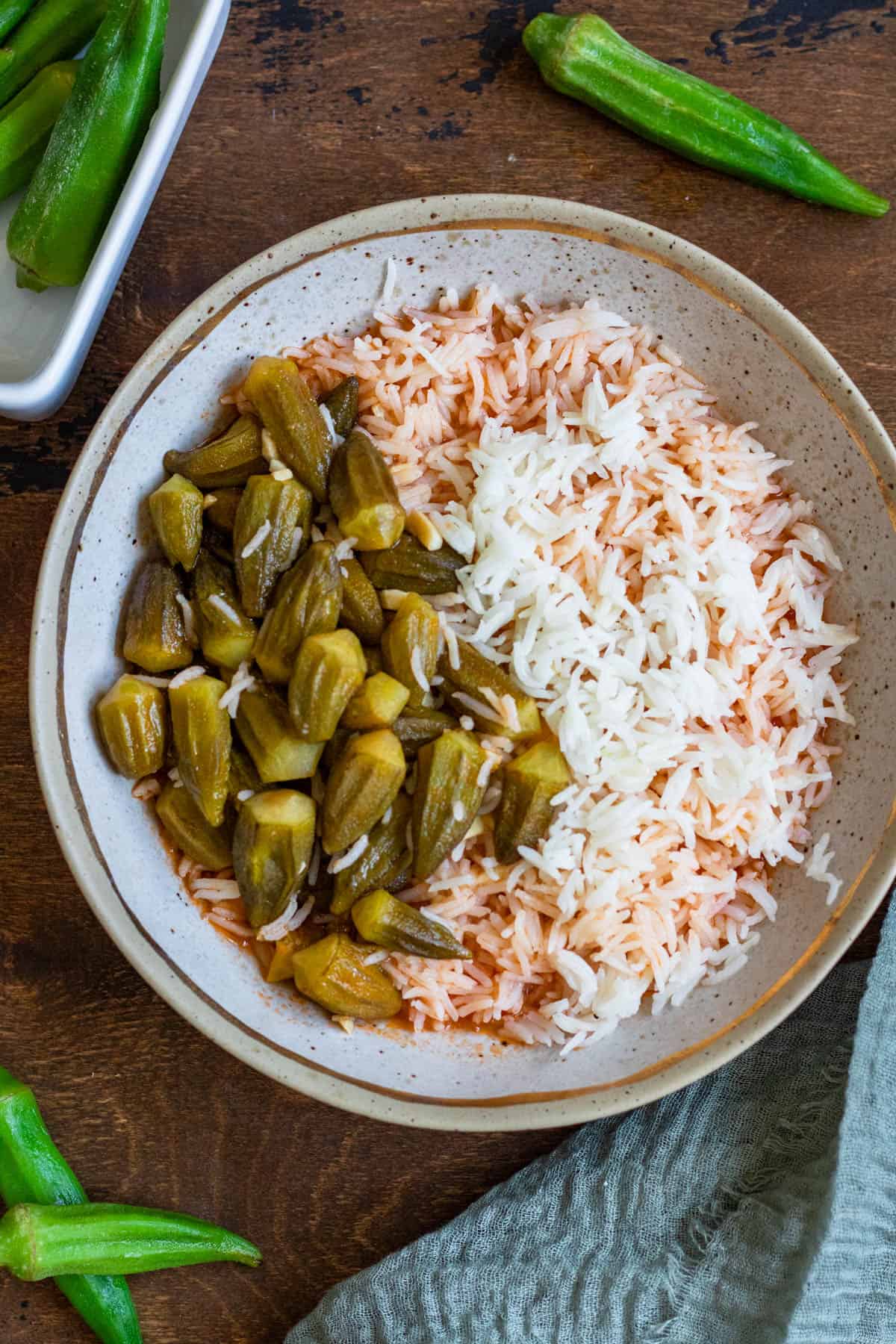
Hello Reader! I try my hardest to research recipes as best as I can before posting to ensure I am representing each culture correctly. If this recipe is from your country and I have made a mistake or you have suggestions for how to make it more authentic, I would love to hear! Please leave a comment below letting me know what should be different, and I will rework the recipe. It is always my intention to pay homage and respect to each cultural dish that I cook. Thanks for reading!
Bamya (or Bamia) is a popular dish in many Middle Eastern households and once you try it, you’ll know why. It’s easy to put together, delicious and filling. Who doesn’t love a warm bowl of delicious stew? Serve this over some buttery vermicelli rice and you will not be disappointed.
There are several slight variations of this okra stew, depending on the origin and how the recipe has been passed down over the years. This particular bamia recipe comes from my Iraqi friend Maryam and has been passed down through her family for years (thanks for the recipe, Maryam!).
If you’re not used to cooking with okra, you might shy away from this recipe but I encourage you to give it a try! Okra is not as intimidating as you think, and this meatless stew recipe is full of fantastic flavor you will not want to miss out on!
Recipe Origin
Bamya (or Bamia) is an Arabic word for okra. This dish can be found in households all over the Middle East in Iraq, Iran, Israel/Palestine, Turkey and even Greece. The base is the same: Cooked okra in a tomato and garlic broth, usually served over rice with pickles or fresh tomatoes.
Okra was mentioned on ancient Iraqi tablets, proving the vegetable has been in the region for a long time. It was first discovered in Ethiopia and spread to ancient Egypt around the 12th century and all throughout the Middle East.
Like many foods, the use of okra spread with the slave trade. It is popular in Africa and the southern United States. It can be eaten raw or cooked. Most often you’ll find it in a stew, gumbo or simply fried (or even as a side to this Cou Cou from Barbados!).
You can find okra raw, frozen or canned in a variation of sizes. Frozen baby okra or fresh baby okra works best for this recipe.
Vegan Bamya, like this recipe, is one of the most popular okra recipes in the Middle East and is often enjoyed during religious celebrations when people eat only plant-based dishes.
What Does Okra Taste Like?
If you’ve never cooked with okra before, the taste can be difficult to describe. Some people say it tastes like green beans while the texture is more like eggplant. To be honest, okra has a mild taste and the texture is unique as well.
Okra, sometimes called ladies fingers, can be fried and crunchy or soft and fragile depending on how it is cooked.
Where to Find Okra
This healthy vegetable thrives in the heat and is harvested in the summer months from June to September. If you decide to use fresh, make sure it is not during the winter months when it is not in season. You may be able to find fresh okra in the winter but it will likely be tough and difficult to cook with.
If it is not in season, you can usually find frozen okra in most Middle Eastern grocery stores.
You may see small or large okra pods. Small okra is best for this recipe. Large okra tends to have a tough, woody texture that is difficult to cook and has large seeds.
Health Benefits
The health benefits of okra are worth mentioning as well! Okra is a low-calorie, nutritious vegetable and is rich in fiber and vitamins.
Okra also has a lot of vitamin A and vitamin C which helps boost antioxidants levels, lower bad cholesterol, prevent heart diseases and promote healthy skin, bones and blood vessels.
How to Make Okra Less Slimy
Okra has a bad reputation of becoming slimy, like aloe vera, when it is not cooked properly. That’s because the seeds in the pods have mucilage– they produce a naturally gelatinous plant mucus.
The slime factor is a turn off for many people, but that slime is actually good for your immune health, lowering blood pressure and supports the growth of healthy bacteria in the gut. It’s also a helpful tool for thickening your stew.
You can prevent the slimy texture from taking over in several ways.
- Cook the Okra Whole: That is why we use small okra in this recipe. It is small enough to eaten in one bite, without cutting it. When you cook your okra whole, it prevents the seeds and slime from escaping. If you are using fresh okra, cut the stem very carefully so you do not release the seeds. Smaller okra also means smaller seeds and less slime.
- Add an Acid to the Recipe: Another tip for reducing the sliminess of your okra is to add a little bit of something acidic like lemon juice, lime juice, or vinegar while cooking to help break down the slimy texture. This recipe calls for a tablespoon of lemon juice.
- Saute the Okra: This recipe also reduces sliminess by sauteing the okra slightly before adding the water. Not all recipes call for this step, but it does provide a great texture in this soup!
Why Make This Recipe
- Delicious Vegetarian Meal: Bamya is often made with lamb or beef chunks but this recipe calls for no meat, making it a great meatless meal.
- Easy Recipe: This dish is popular in Middle Eastern homes because it is so easy to put together for a busy weeknight meal. Throw all the items into one pot, let it boil and serve over rice!
- “Travel” to Iraq: This dish is popular all over the middle east in Iraq, Jordan, Palestine, Egypt, even Greece and Turkey. Why not give it a try and find out why?
What Do I Need to Make This Recipe?
Ingredients
Here is a visual overview of the ingredients in the recipe. Scroll down to the recipe at the bottom for quantities.
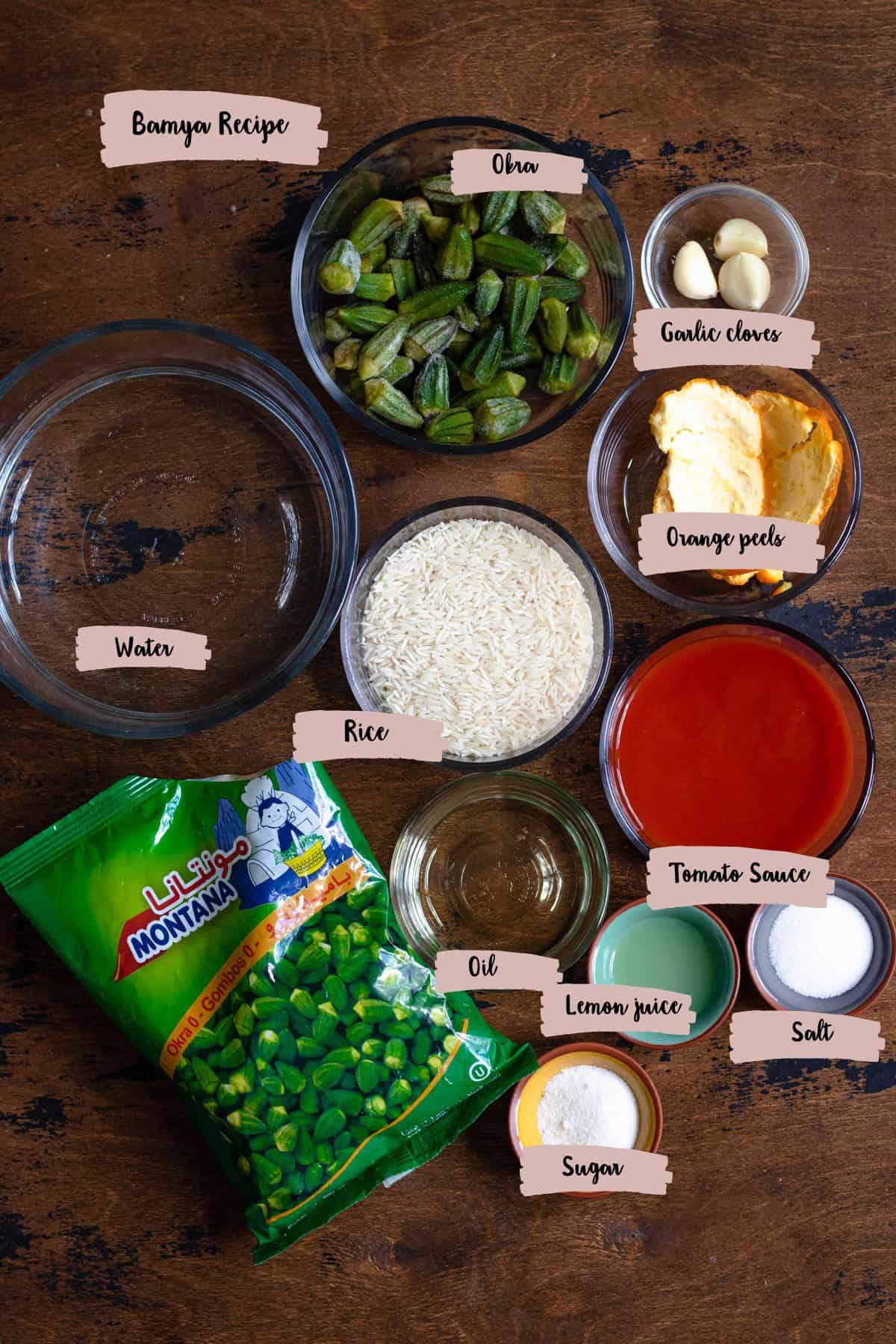
- Okra: Look for small, frozen okra in your local Middle Eastern grocery store. You can also use the standard size okra or fresh okra if necessary.
- Orange Peel: Most Bamya recipes do not call for the orange peel but it adds a citrusy sweetness to the dish that I enjoy.
- Rice: You can serve this dish with a side of vermicelli rice, white rice, brown rice, or basmati rice
Tools
- Pot: I love that this is an easy one-pot recipe. Use a medium-sized pot!
How to Make This Recipe
[adthrive-in-post-video-player video-id=”zw65xVWS” upload-date=”2022-09-22T05:22:44.000Z” name=”Bamya Recipe” description=”Bamya is a popular stew in the Middle East made with okra and tomato sauce. While it is sometimes served with meat, this version is a delicious vegetarian meal served over rice.” player-type=”default” override-embed=”default”]
Step 1: Prepare your Okra

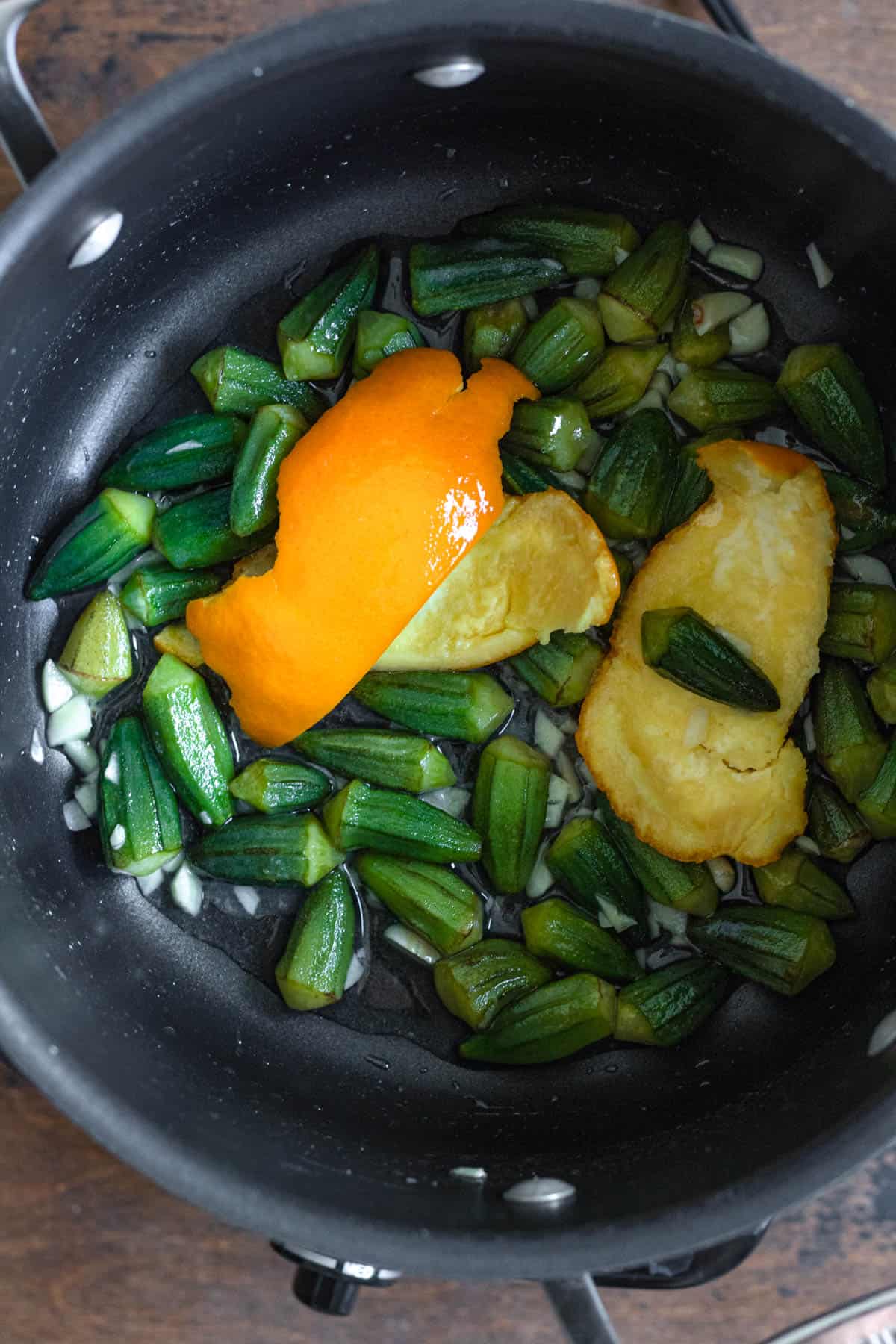
Wash the frozen okra under warm water until they are a little soft. Add the vegetable oil to the bottom of a large pot.
Peel an orange and cut the peel in fourths. Add two fourths of the peel, the garlic, okra, and salt to the pot.
Cook for about 3 minutes or until you can smell the garlic.
Step 2: Add the Liquids

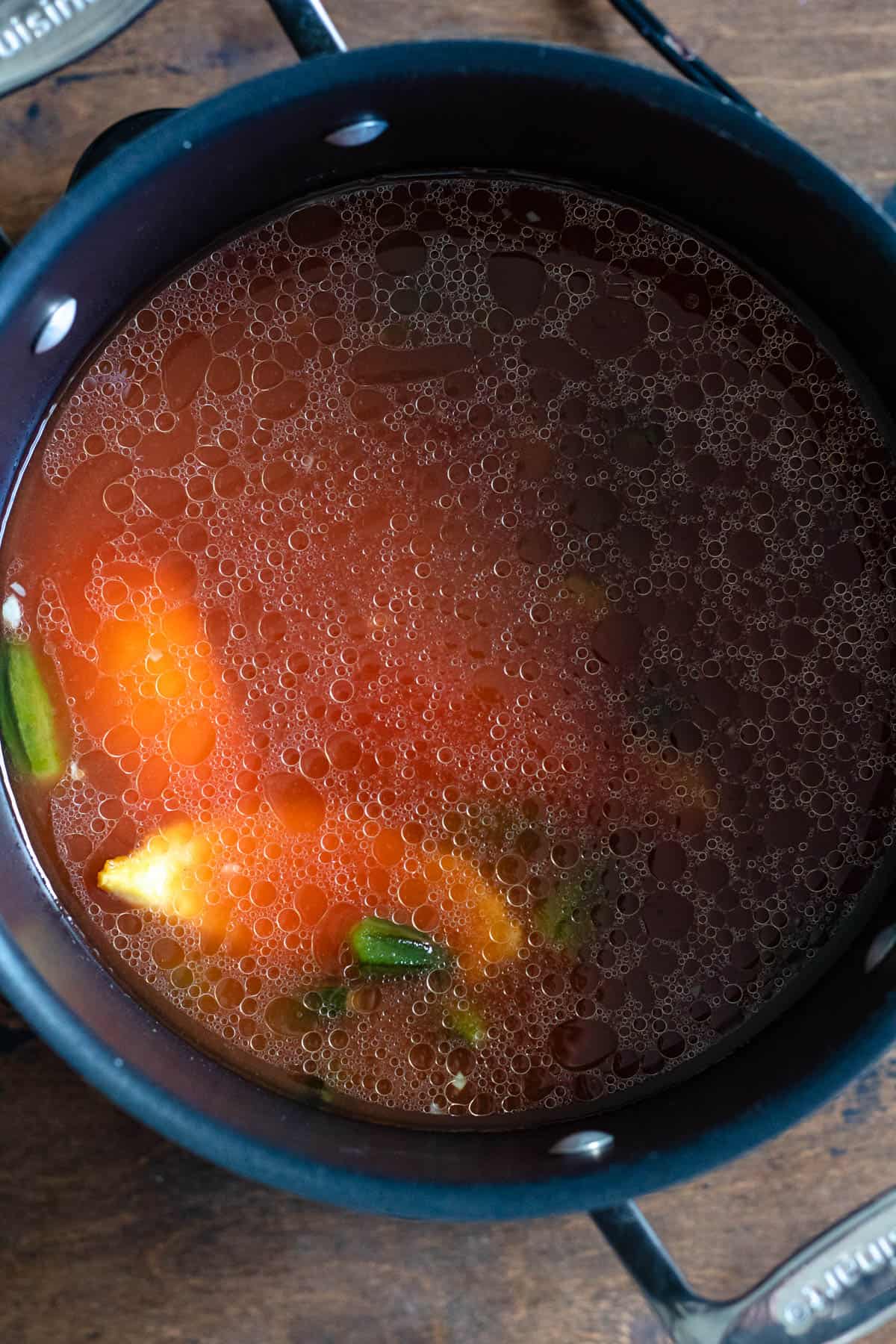
Add two cups of water to the pot, mix gently, and add a lid onto the pot. Bring to a boil on medium heat or medium-high heat for roughly 20 minutes.
After 20 minutes, add the can of tomato sauce and one more cup of water. The add lemon juice and granulated sugar.
Step 3: Let Simmer
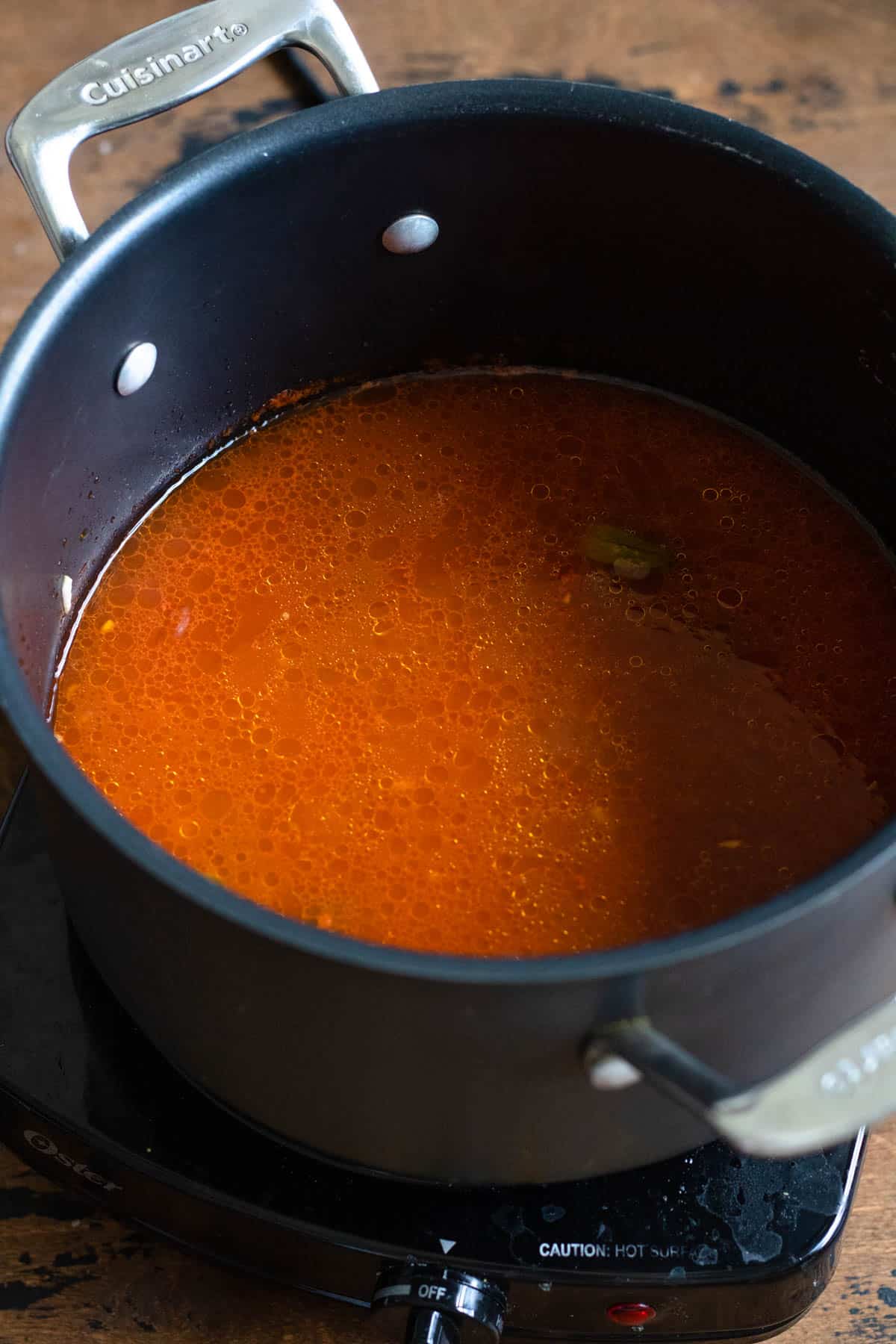
Gently mix and let simmer for another 5 to 10 minutes.
Check the softness of the okra, as well as the seasoning and adjust accordingly. If okra is soft, turn heat off, remove the orange peel, and serve the bamya over a bed of cooked rice.
Expert Tips
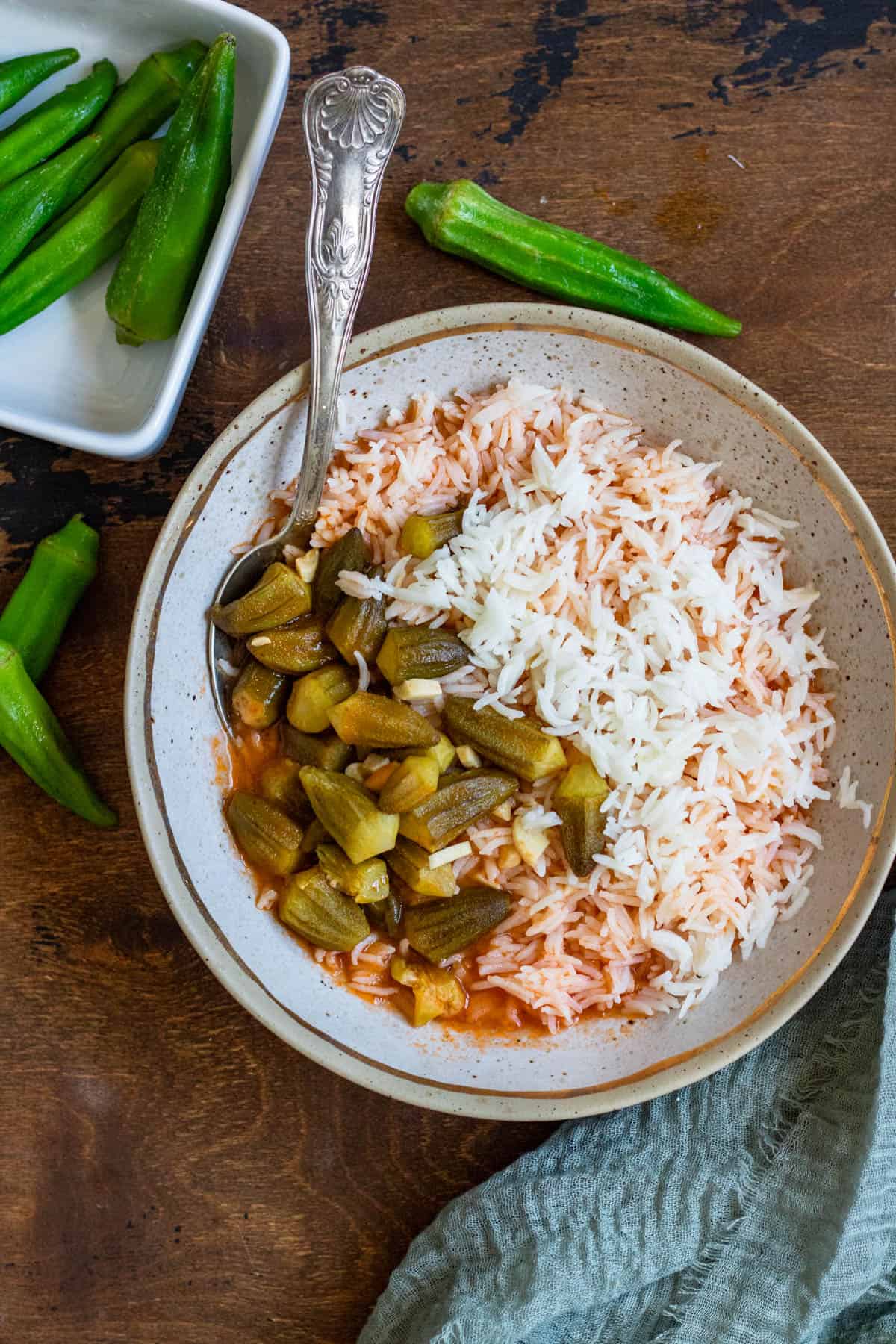
- You can use full-sized okra if that’s the only thing you can find. It may need to cook for a few extra minutes. The frozen bags of small okra are easily found at an Arabic grocery store.
- Some recipes use lamb to add a protein to Bamya. You can also use chunks of cubed stew beef if you’d prefer! This is a vegetarian version.
- Some recipes call for using onions. Feel free to slice up a small onion and saute diced onions with the garlic for a couple of minutes if you’d like.
FAQs
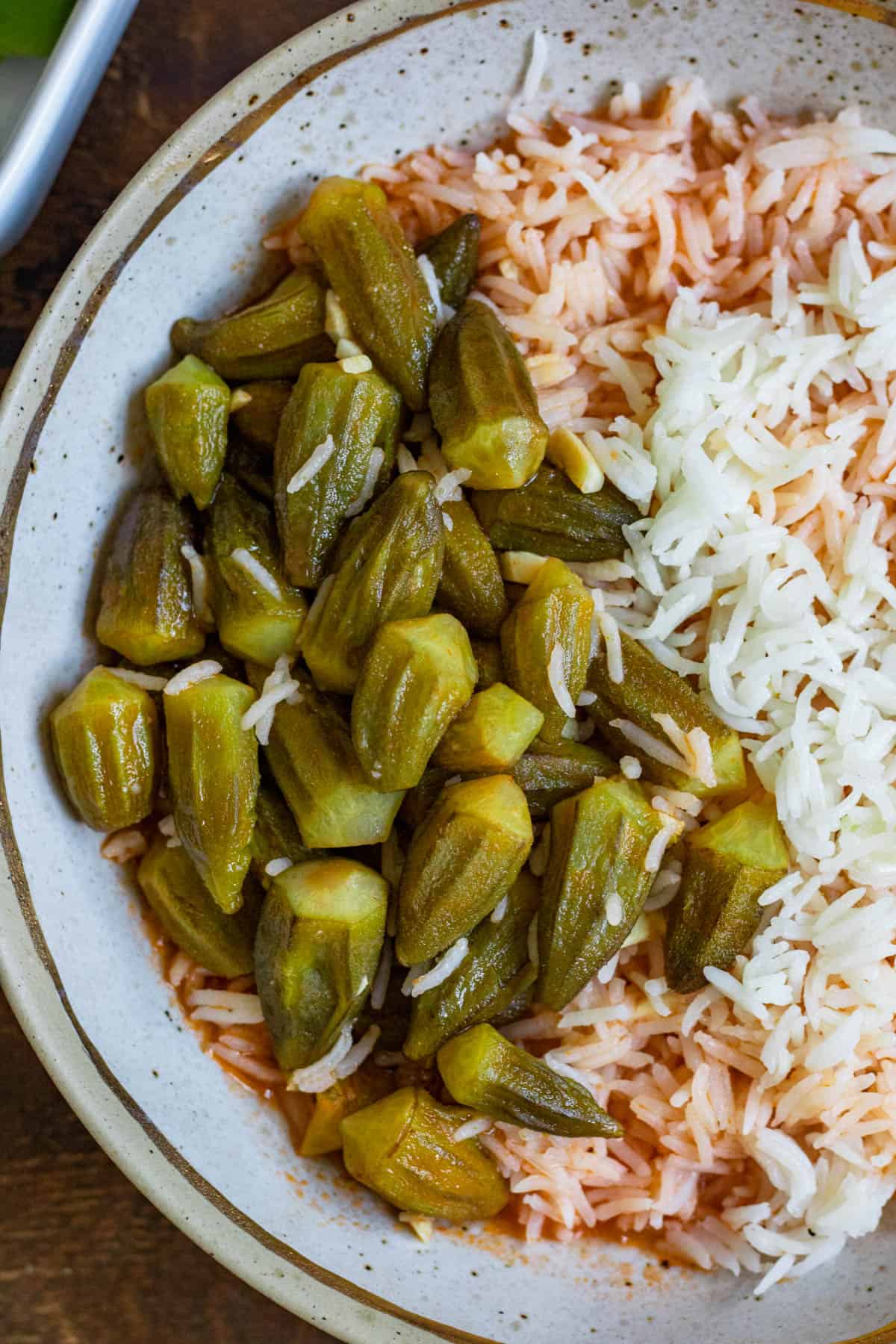
This dish, like most Middle Eastern dishes, is served over white rice. It’s also common to serve it with some flatbread, pita bread, a salad or cut up vegetables. To keep it vegetarian, Middle Eastern Falafel Balls would go well. If you enjoy meat, Sfiha, a flatbread topped with meat and spices would compliment the vegetables well.
Yes! You can quickly saute your okra in your pressure cooker, add the rest of your ingredients and cook on high for about ten minutes. I have not tested this out so the exact cooking time may vary.
Yes! If you want a heartier stew it’s easy to add some red meat like lamb or beef to this recipe. I would saute the lamb or beef cubes with the okra in the beginning and then allow the stew to simmer until the meat is tender. When meat is added, the stew must cook for a much longer period of time.
Did you like this Bamya Recipe? If so, make sure to check out these other recipes I picked out just for you:
- Sopa de Camarones
- Chicken Machboos from Bahrain
- Baba Ganoush
- Ghormeh Sabzi Recipe from Iran
- Pakistani Chicken Karahi Recipe
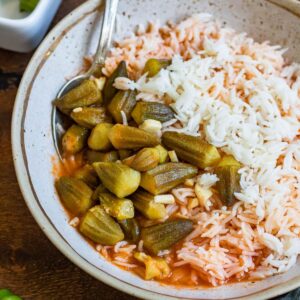
Bamya Recipe
Equipment
- Pot(s)
- Citrus Juicer
Ingredients
- 6 oz okra, frozen
- 3 tablespoon vegetable oil
- 3 cloves garlic , roughly minced
- ½ peel from an orange
- ½ tablespoon salt
- 3 cups of water, divided
- 8 oz tomato sauce
- 1 tablespoon lemon juice
- 1 tablespoon granulated sugar
- 2 cups of cooked rice of your choice, basmati, brown, cauliflower, etc.
Instructions
- Wash 6 oz frozen okra under warm water until they are a little soft.
- Add 3 tbsp vegetable oil to the bottom of a medium sized pot. Then add the minced garlic, okra, peel from ½ an orange, and ½ tbsp salt. Cook for about 3 minutes or until you can smell the garlic.
- Add two cups of water to the pot, mix gently, and add a lid onto the pot. Bring to a boil on medium heat for roughly 20 minutes.
- After 20 minutes, add 8 oz of tomato sauce and one more cup of water.
- Add 1 tbsp lemon juice and 1 tbsp granulated sugar.
- Gently mix and let simmer for another 5 to 10 minutes.
- Check the softness of the okra, as well as the seasoning and adjust accordingly. If okra is soft, turn heat off, remove the orange peel, and serve the bamya over a bed of cooked rice.
- Enjoy!
Notes
- Okra: Look for small, frozen okra in your local Middle Eastern grocery store. You can also use the standard size okra or fresh okra if necessary.
- Orange Peel: Most Bamya recipes do not call for the orange peel but it adds a citrusy sweetness to the dish that I enjoy.
- Rice: You can serve this dish with a side of vermicelli rice, white rice, brown rice, or basmati rice
- You can use full-sized okra if that’s the only thing you can find. It may need to cook for a few extra minutes. The frozen bags of small okra are easily found at an Arabic grocery store.
- Some recipes use lamb to add a protein to this recipe. You can also use chunks of cubed stew beef if you’d prefer! This is a vegetarian version.
- Some recipes call for using onions. Feel free to slice up a small onion and saute diced onions with the garlic for a couple of minutes if you’d like.



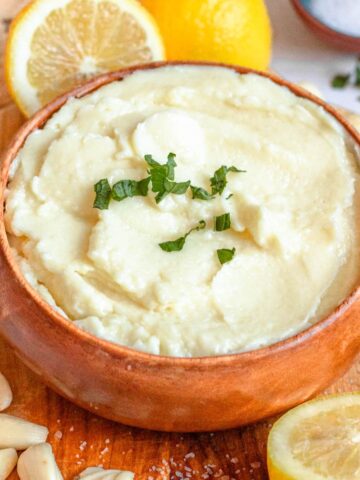
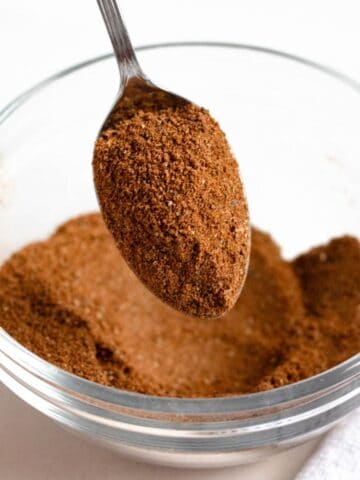

Leave a Reply